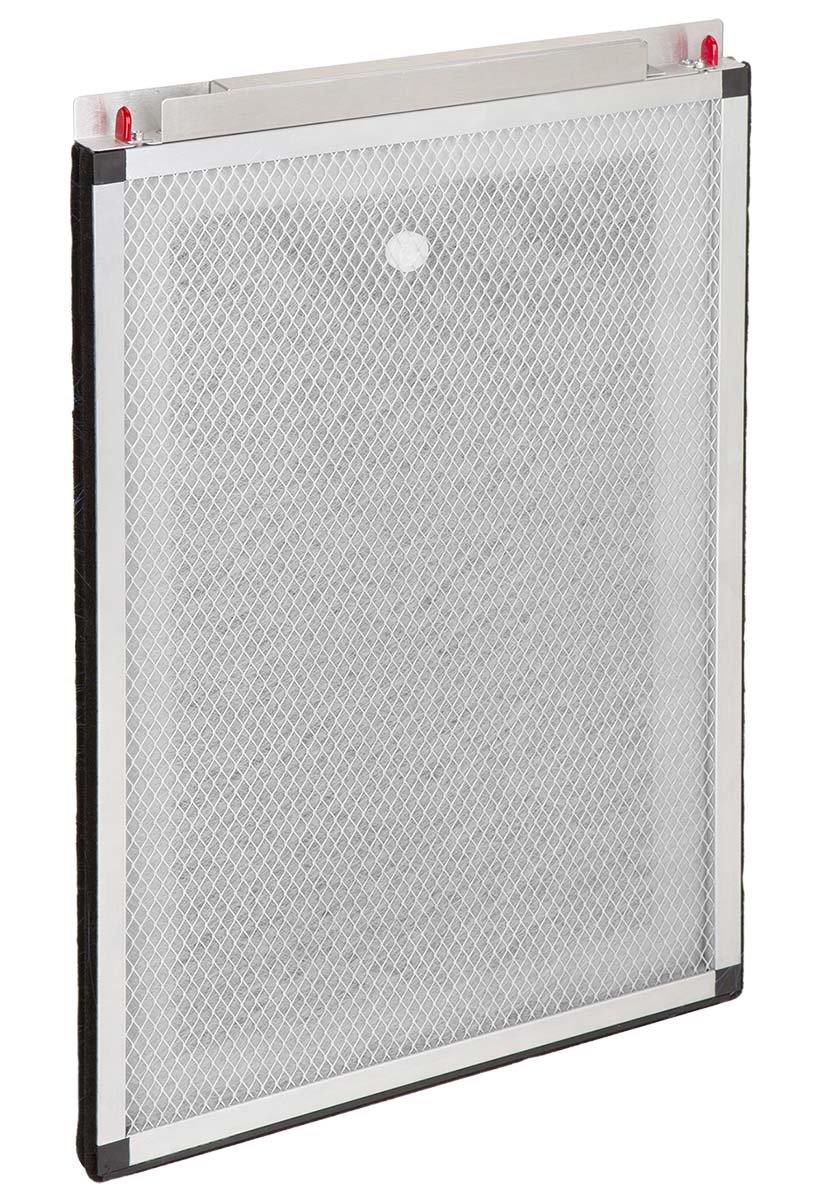What's the CADR of Your IAQ Products? - ACHR NEWS
✕
Just the other day I received an email from a contractor client who was working with a homeowner who is receiving assistance from the state of New York for an updated HVAC and IAQ system. New York state was asking this contractor to supply the clean air delivery rate (CADR) of the HVAC IAQ system to qualify the homeowner for this assistance as part of the requirement for this customer's application. So, in turn, the contractor asked us for the CADR on our products that were being installed, which included a 24-V polarized media air cleaner and a high-output UVC/UVV system. Simple enough request, right?
Well, not so simple!

FRESH AIR FILTRATION: A P1000 with a 1-inch panel. (Courtesy of Dynamic Air Quality Solutions)
First, let's give credit where credit is due. The only existing test that looks at an air cleaner's impact on particles in a room space over time is the ANSI/AHAM AC-1-2020, often called the CADR. This is aimed at testing stand-alone, plug-in air cleaners, and, while it has some flaws, it is a reasonable protocol. However, results are as much a function of the airflow pattern and cfm yielded by the fan of a given unit, as they are the efficiency of the filter inside, and the test does not apply to whole-house, in-duct filters and air cleaners. Also, it only addresses particle arrestance and not biological pathogen inactivation or gas phase (VOC) control.
Since the HVAC IAQ application in question controls all three phases of indoor air contaminants (particles, germs, and gases), only one of the three technologies installed would apply to the state's request for CADR efficacy, that being the 24-V polarized media air cleaner.
But CADR only applies to room air cleaners. It does not apply to whole house air cleaners that utilize the HVAC system for air movement through the air cleaner. The CADR test is conducted in a 1,008-cubic-foot room, which is basically the size of a small bedroom. Room air cleaners have their own fans to move air through the filter inside their unit, and, when placed in this 1,008-cubic-foot room with the fan on, a CADR can be measured comparing one air cleaner to another. If you put a polarized media air cleaner, or any in-duct filter or air cleaner, in that test room, nothing will happen because the air cleaner does not have a fan to move the air through it. In-duct filters and air cleaners use the HVAC system for air movement. If there is no air movement through the air cleaner, there will be no CADR results.
Finally, the CADR rating was developed by the Association of Home Appliance Manufactures (AHAM), so it's recognized by retailers and manufacturers that sell room air cleaner "appliances." Whole-house air cleaners are not covered by the CADR specifically because the measurement is performed in the test room without any air movement other than the cfm the actual room air cleaner produces, and in-duct filters and air cleaners produce no airflow in and of themselves. A fan is not an intrinsic part of the system.
Hopefully this information will serve as a guide the next time you are asked, "What's the CADR of your IAQ products?"
Comments
Post a Comment